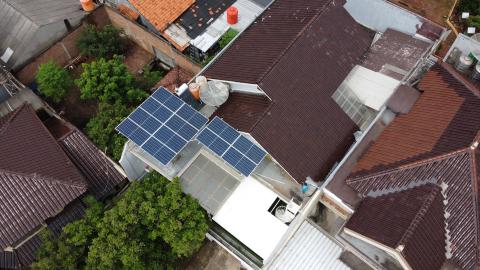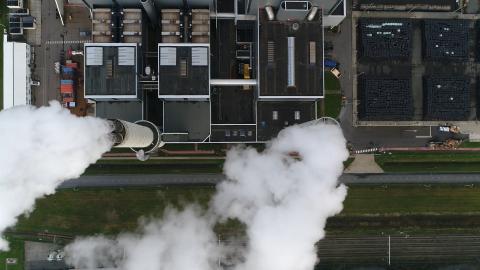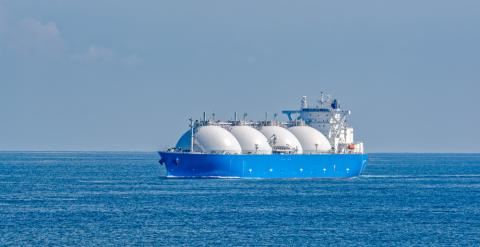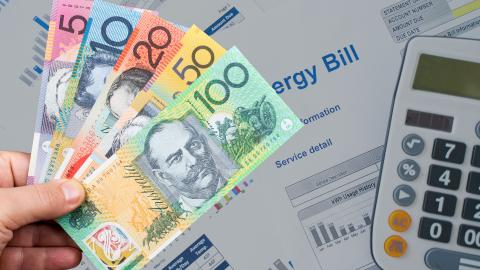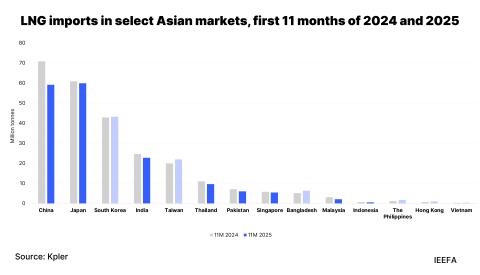Collector of labelled debt: Snam’s net-zero transition plan has much to prove

Key Findings
Snam’s continued focus on gas network and storage activities without adequately addressing end-user emissions undermines the credibility of its transition plan.
Snam’s transition plan fails to assess the carbon lock-in of its assets, with more than half of its planned investments in gas infrastructure likely not aligned with EU climate objectives.
The company has actively issued debt under various sustainability labels, but few have clear commitments to align the use of proceeds with the EU taxonomy for sustainable activities.
Sustainable investors should carefully scrutinise the contributions of Snam’s labelled debt to its transition plan.
Snam released its transition plan for net-zero emissions by 2050 in October 2024 and its 2025-2029 strategic plan in January 2025. The Italian gas utility was among the first companies to publish a comprehensive, actionable transition plan, well ahead of the mandatory requirements set out under the European Union’s (EU) Corporate Sustainability Reporting Directive and Corporate Sustainability Due Diligence Directive.
The European Commission defines a transition plan for climate change mitigation as “an aspect of an undertaking’s targets, actions and resources for its transition towards a lower-carbon economy, including actions such as reducing its GHG emissions with regard to the objective of limiting global warming to 1.5°C and climate neutrality”. The European Financial Reporting Advisory Group recently published an early draft implementation guidance on transition plans. It provides a clear framework for companies to outline their target compatibility, decarbonisation levers, investment and funding, governance, strategy and progress.
In 2021, IEEFA raised scepticism of Snam’s target compatibility with the Paris agreement, due to the exclusion of end-use emissions of transported gas from its Scope 3 emissions reporting and targets. Snam’s latest transition plan outlines its net-zero ambitions for its Scope 3 emissions but does not account for these significant end-user emissions (100 times greater than Scope 1 and 2 emissions combined, as Snam itself notes in its transition plan). The company claims Scope 3 emissions are “outside of [its] direct control”, but external reviewer Moody’s treated this exposure negatively, marking down its final net-zero score to three on a five-point scale.
Snam’s ambition to facilitate the transport of non-fossil gases in Europe seems contradictory to its claimed limited role in reducing downstream emissions. In IEEFA’s view, a clear and objective way to demonstrate credible transition progress would be to include these emissions in Scope 3 immediately (for example, by using the throughput calculation method described by CDP) and track how these emissions reduce each year. This decarbonisation pathway would better support Snam’s vision of a “multi-molecule set-up”, including biomethane and hydrogen.
Snam has set Scope 1 and 2 targets in line with the Science-Based Targets initiative generic methodology. These performance targets are tied to the company’s sustainability-linked instruments, holding it to account on its decarbonisation progress. Interim targets include, for example, reductions of Scope 1 and 2 greenhouse gas emissions of 25% by 2027, 40% by 2030 and 50% by 2032.
These targets do not tell the full story of how the company manages climate transition risks under a 1.5°C global warming scenario. How it responds to shifts in the energy mix under EU-wide climate neutrality will be vital to the success of its transition plan. While Snam’s midstream gas transport, storage and regasification activities remain intact under the existing regulatory framework, they are exposed to Italy’s future gas demand in an increasingly electrified energy system. The country’s gas consumption dropped by 19% from 2021 to 2024.
Snam’s heavy reliance on carbon capture and storage, blue hydrogen and biomethane is underpinned by a planned investment of €27 billion from 2025 to 2034. However, less than half of these investments are expected to align with the EU taxonomy, a classification system that defines climate-aligned criteria for economic activities. The company claims its investments in gas infrastructure will be “hydrogen ready”, but most of these projects are not expected to meet the EU’s climate criteria. Continued fossil fuel investments might be incentivised by the possibility of boosting returns through expanding the regulated asset base, which is expected to grow by 6% annually between 2024 and 2029. But these assets will significantly increase the risks of carbon lock-in.
These projects also have a limited proven track record. Of Snam’s €2.2 billion of capital expenditure (capex) in 2023, €626 million (29%) was aligned with the EU taxonomy. More than half of its gas network capex and two-thirds of its biofuel capex are not aligned with EU taxonomy. IEEFA is concerned that Snam’s transition plan does not detail the potential locked-in emissions of these new regulated assets and products.
Snam has been actively issuing sustainable debt under a collection of labels including “climate action”, “transition”, “sustainability-linked”, “EU taxonomy-aligned transition” and “green”. While the company aims to further increase its share of sustainable finance, investors should be aware of the implications of these labels.
Snam’s €1.45 billion of EU taxonomy-aligned transition bonds could appear more credible compared with other labels due to the company’s pledge to select projects based on EU taxonomy requirements. But Snam has not detailed the projects associated with the allocated proceeds of €918 million as of 2023, nor has it confirmed how these projects comply with the taxonomy’s technical screening criteria. In any case, this represents only a quarter of its total sustainable labelled debt and less than 10% of its total reported financing borrowings as of December 2023. Given most of Snam’s project pipeline does not meet the taxonomy’s criteria, the proceeds of its labelled debt are likely to fund projects with a higher risk of carbon lock-in.
Greater transparency is needed to show how the proceeds of this debt can contribute to Snam’s transition plan and lower the risk of perceived greenwashing. For instance, it could use the European Green Bond Standard to improve its transition plan. Snam plans to conduct an eligibility analysis of its capex, which could be a positive step towards aligning some debt issuances with the standard where proceeds are earmarked for the company’s EU taxonomy-aligned investment plans.
Snam should aim for a higher investment alignment with the EU taxonomy over time, supported by investments in a diversified portfolio of environmentally sustainable activities. This should be set as the company’s sustainability-linked instruments’ performance targets, ensuring accountability. Snam’s existing sustainability-linked financing framework focuses on emissions targets that do not sufficiently address the company’s exposure to transition risks. Safeguarding the use of debt proceeds under the European Green Bond Standard, with a nuanced sustainability-linked structure, would add credibility to Snam’s transition plan.
Issuing a series of credible European green bonds could indicate lower transition risks, but Snam has a long way to go. Merely attaching a loose collection of sustainability labels to debt instruments will only invite more scrutiny of the company’s transition progress.


